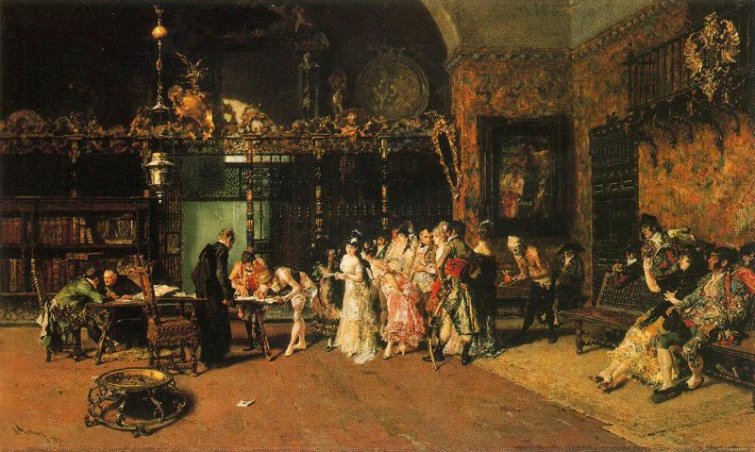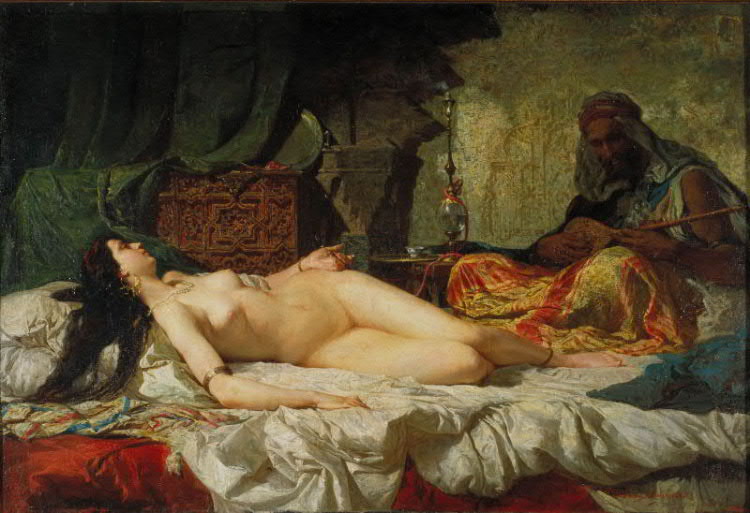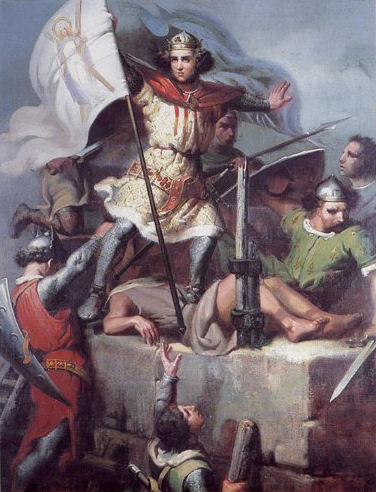Mariano Fortuny y Carb?
Mariano Fortuny y Marsal
[Spanish Painter, 1838-1874]
| ? Also known as: | Mariano Fortuny I Mariano Fortuny Marsal Mariano Fortuny y Carb? |

La Vicaria
이그림은 18세기 에스파냐의 장엄한 교회의 성구실에서 결혼식 증인들이 결혼증명서에 서명하고 하객들은 기다리고 있는 순간을 묘사한 것이다.
Mariano Fortuny y Carb?, He was born in Reus, a town near Taragona in the autonomous community of Catalonia in Spain. His father died when he was an infant, his mother by age 12, thus Mariano was raised by his grandfather, a cabinet-maker. His grandfather taught him to make wax figurines. At the age of 9, at a public competition in his town a local patron, Domingo Soberno, encouraged further study. At the age of 14 years he moved to Barcelona with his grandfather. A sculptor, Domingo Taleru, secured him a pension of to allow him to attend the Academy of Barcelona. There he studied for four years under Claudio Lorenzale, and in March of 1857 he gained a scholarship that entitled him to two years of studies in Rome starting in 1858. There he studied drawing and grand manner styles.
In 1859, he was called by the Spanish government to depict the campaigns of the Spanish-Moroccan War. The expedition lasted for only about six months, and he returned to Spain in the summer of 1860.
The battle of Tetuan by Mariano Fortuny (1863-73)Since the days of Velazquez, there had been a tradition in Spain of memorializing battles and victories in paint; and on the basis of his experiences, Fortuny was commissioned by the city of Barcelona to paint a large canvas diorama of the capture of the camps of Muley-el-Abbas and Muley-el-Hamed by the Spanish army. He began his composition of The battle of Tetuan on a canvas fifteen metres long; but though it worked on and off on it during the next decade, he never finished it.
The greater influence of this travel on Fortuny was his subsequent fascination with the exotic themes of the world of Morocco, painting both individuals and imagined court scenes. He visited Paris in 1868 and shortly afterwards married Cecilia de Madrazo, the daughter of Federico Madrazo, who would become curator of the Prado Museum in Madrid. Together, they had a son, Mariano Fortuny y Madrazo, who became a well-known fashion and tapestry designer. Another visit to Paris in 1870 was followed by a two years' stay at Granada, but then he returned to Rome, where he died somewhat suddenly on the 21st of November 1874 from an attack of tertian ague, or malaria , contracted while painting in the open air at Naples and Portici in the summer of 1874.
Fortuny paintings are colorful, with a vivacious iridescent brushstroke, that at times recalls the softness of Rococo painting but also anticipates impressionist brushwork, Fortuny’s recollection of Morocco is not a costume ball, but a fierce, realistic portrait which includes bare-chested warriors. Richard Muther states:
“his marvellously sensitive eye … discerned the stalls of Moorish carpet-sellers, with little figures swarming, and the rich display of woven stuffs of the East; the weary attitude of old Arabs sitting in the sun; the sombre, brooding faces of strange snake-charmers and magicians. This is no Parisian East…every one here speaks Arabic”.
Fortuny often painted scenes where contemporary life had still not shaken off the epaulets and decorations of ancient traditions such a the ‘’Burial of a matador’’ and couples signing marriage contracts (La Vicaria). Each has the dazzle of bric-a-brac [1]ornament, but as in his painting of the ‘’Judgement of the model’’, that painterly decorative air of Rococo and Romanticism was fading into academicism and left to confront the naked reality of the represented object. He inherited Goya’s eye for the paradox of ceremony and reality.
Odalisque
1861, Oil on cardboard,(56.9 × 81 cm)
National Art Museum of Catalonia
Odalisque
1862, Oil on canvas, 54 × 62 cm
Private collection
Battle of Tetuan
Ramon Berenguer III

Idyll
The Cafe of the Swallows
Moroccan Man
Visit day in the parsonage, detail, 1870
In 1860 I Explode the war of Spain against Morocco, and the Delegation of Barcelona an assignment Fortuny that travelled to this country with the graphic spirit to be become columnist of the Combat in company of Pedro Antonio of Alarc?n. There it would be integrated like the painter in the regiment of the general one Juan Prim, also native of Reus.

The Artist's Children in the Japanese Salon
Africa is going to suppose a discovery for Fortuny, dazzled by the north african light and dazzled by the open plains, the lights and the inhabitants of Morocco, arriving even to learn Notions of Arab to be integrated better in the context. It will free itself since this moment of conventions and academicismos, being felt attracted intensely by the oriental themes. As a result of that stay, Fortuny painted some of the most significant works of its production
'그림 모음방' 카테고리의 다른 글
| 2차대전때 실종된 미폭격기 달에서 발견 (0) | 2009.05.28 |
|---|---|
| ▶ 인생 삼락 (人生 三樂) ◀ (0) | 2009.05.28 |
| John Lovett (0) | 2009.05.25 |
| Harem의 여인들 (0) | 2009.05.24 |
| 김 홍도의 그림 세계 (0) | 2009.05.24 |






